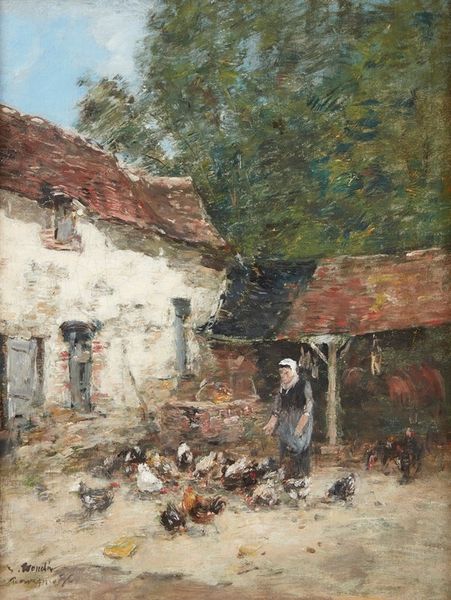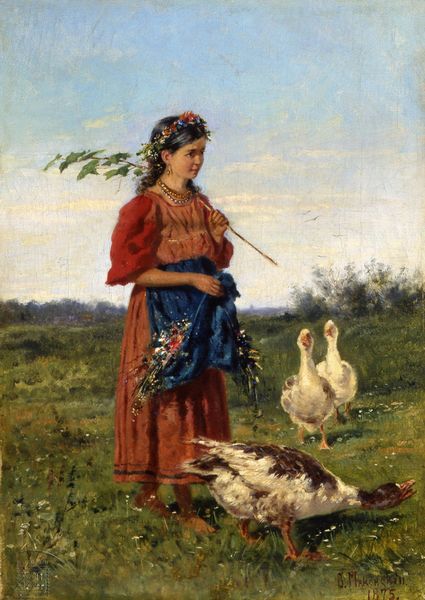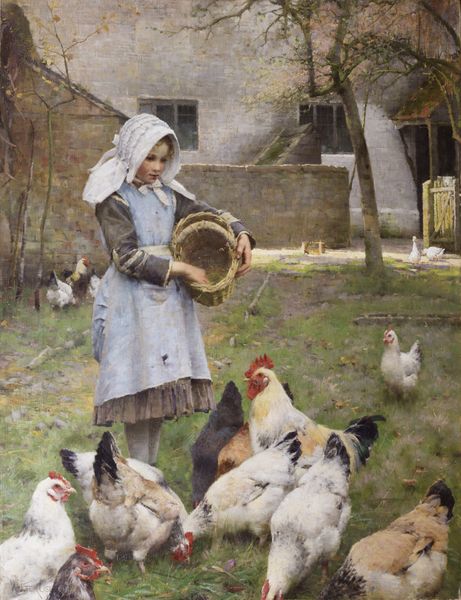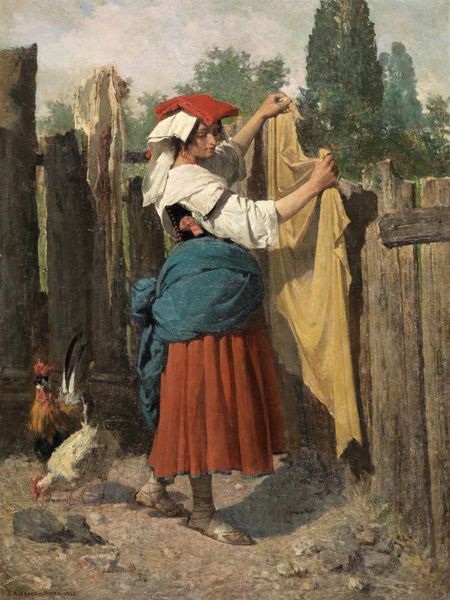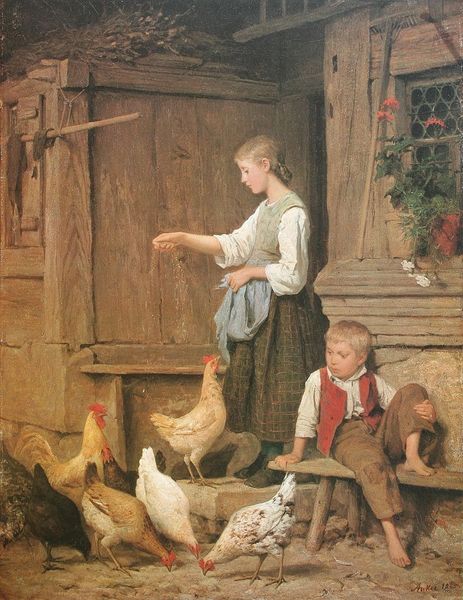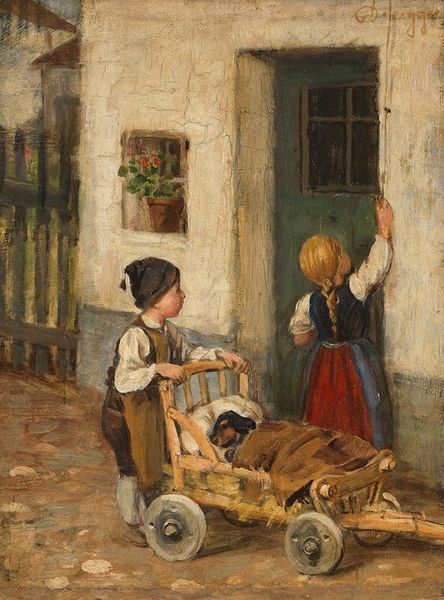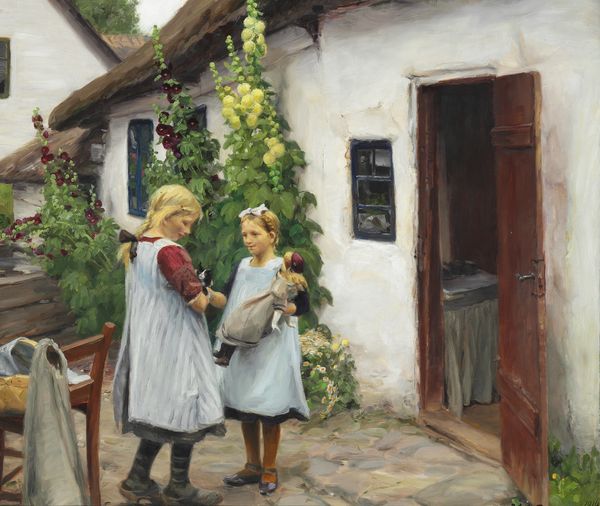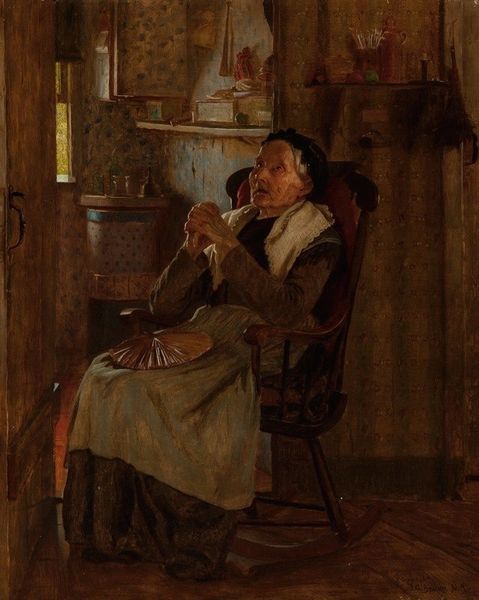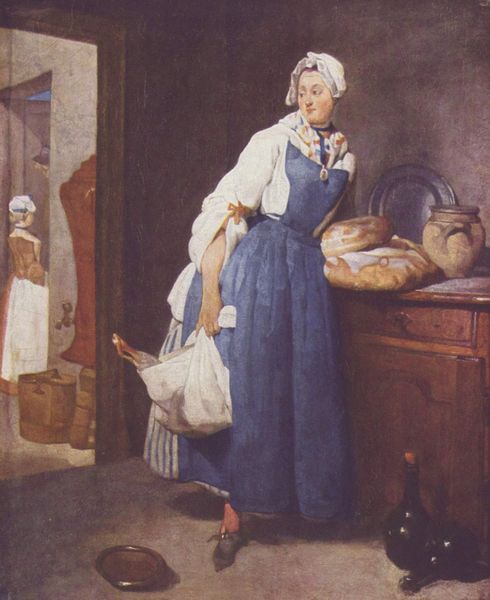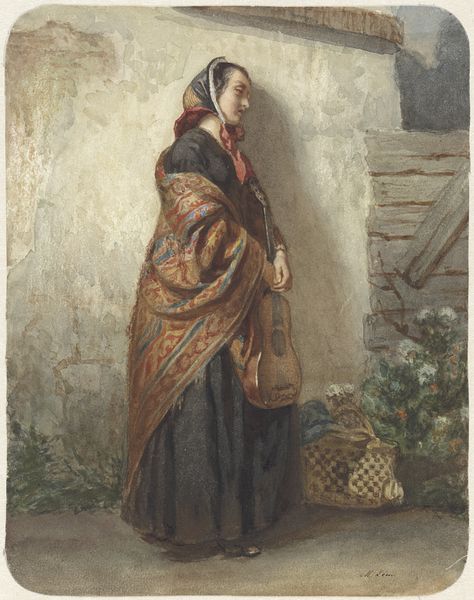
Copyright: Public domain
Curator: Let's explore "Will It Rain?", painted in 1887 by James Charles. The medium appears to be oil on canvas. What are your initial thoughts? Editor: A deeply evocative image. It exudes a palpable sense of precarity, of being caught between worlds. The somber tones and the woman’s contemplative gaze speak of lives lived on the edge, dependent on forces beyond their control. Curator: Precisely. Observe how Charles masterfully uses light and shadow to create depth and texture. Note the composition, with the central figure positioned against the geometric rigidity of the cottage window versus the animalistic figures in the periphery. Editor: But that's also indicative of the subject’s limited agency! Here’s a woman of indeterminate age, clearly working-class, framed by domesticity but facing outward. Holding an umbrella, suggesting awareness and possible resilience toward nature's whim. The question isn't just about the weather; it's about survival! The setting speaks volumes about rural life and its inherent uncertainties. Curator: Interesting. However, I'm drawn to the more immediate visual contrasts. See the textured facade of the cottage that sets off the smoothness of her shawl, the hard lines that soften. And the deliberate contrast between the verticality of the door and the horizontal expanse of the landscape, creating a balanced composition. Editor: I'd suggest those choices reflect more profound social structures. The house versus the animals creates a clear distinction between public and private spheres, the expected place of women, of course. Is this meant to comment on the social restrictions of women? Her placement at the border implies a challenge to them, perhaps? Curator: Perhaps, but isn't it just as effective as a purely formal arrangement, anchoring her presence? I'd like to stay grounded in Charles’ construction and manipulation of forms to build meaning rather than assuming social commentary. Editor: Even without explicit commentary, the painting reveals aspects of a society structured by power imbalances that would be recognizable to the audiences of its time. The details point to social context. We see those dynamics embodied here. Curator: On that note, this closes my eyes a little bit wider towards considering our social history reflected here. Editor: For me, this artwork prompts more questions than it answers about rural womanhood during the Victorian Era. An invitation to learn more about their stories and connect them to our own present and to the structures and strategies of resilience then and now.
Comments
No comments
Be the first to comment and join the conversation on the ultimate creative platform.

